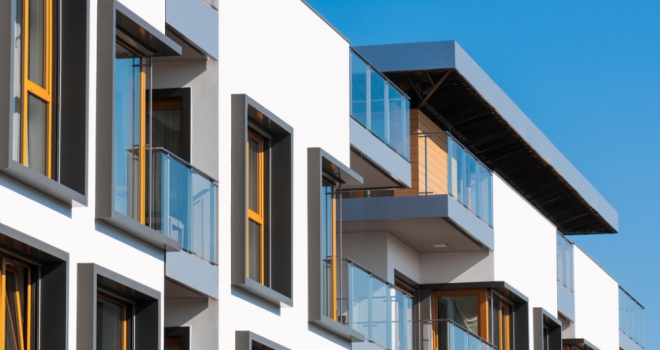
Over the last 15 years, the HMO market has been transformed. Back in the ‘90s, multi-lets were mainly student housing or cheap and slightly tatty homes for those on a meagre budget. But by the mid-2000s, things were starting to change, and now many landlords offer boutique-style shared accommodation for working professionals.
The reason for the boom in HMOs was, quite simply, that they could generate far better returns than single-home lets. Despite the additional administration demands of letting each room on a separate Assured Shorthold Tenancy (AST), more significant maintenance requirements due to higher traffic through the property and having to pay utility bills, the all-inclusive room rents could add up to 2-3 times what you’d get for letting the property to one family, leaving landlords with market-leading profits.
But, as the market grew, regulations tightened. On top of the extra duties, obligations, costs and tax changes that affected every landlord, HMOs were subjected to additional health and safety rules, potentially having to gain planning permission for change of use and mandatory licensing. In October 2018, HMO landlords were hit with a ‘double-whammy’:
Minimum sizes for bedrooms were introduced, meaning some landlords could no longer let certain rooms, dramatically reducing their income
The ‘three storeys or more’ criteria for needing a licence was removed, meaning any HMO housing five or more unrelated individuals had to be licensed.
Most recently, under the Fire Safety (England) Regulations 2022, which came into force on 23 January this year, HMO landlords must appoint a ‘Responsible Person’ for the building, who is legally responsible for ensuring specific fire safety duties are carried out.
These minimum duties include putting up fire safety instructions and distributing them to all tenants – both on move-in and annually after that – and providing information about guidance about fire doors.
So HMO landlords have much to know, do and stay on top of. And now, in addition to significantly higher mortgage interest rates than they’ve been able to access over the last decade or so – which is a potential issue for all landlords, regardless of the let - HMO landlords are finding their profits dented further by energy costs, which have rocketed over the past couple of years. Very few landlords have been able to pass the majority of this increased cost on to their tenants.
So, with tighter regulations requiring more time, effort and money – plus increased fines for landlords who fail to comply, even unintentionally – and profits being squeezed by rising costs and fewer tax breaks, are HMOs still a viable investment?
The upsides of HMOs
There are two significant benefits to letting a property as an HMO. Firstly, while there are a lot of hoops to jump through, and HMOs will always be more time-consuming than single-let properties, the reality is that they still usually generate a higher profit. Tenants are willing to pay good market rates for a decent private bedroom in a well-maintained shared home finished to a high standard.
Secondly, a change in tenancy in a single-let home often means you have a void period with no rent coming in. The benefit of having each room let individually is that if you have one room vacant between lets, the other rents should be more than enough to cover your costs until the room re-lets and may even continue to generate a monthly profit.
And there’s a potential bonus benefit to having an HMO. Because they are larger properties, they may have better scope for adding value through extending than a smaller single let. If you can refurbish and extend when you buy, you could increase the capital value substantially.
Five things to consider if you’re thinking of investing in HMOs
Have you got enough capital?
Because HMOs are considered a higher risk, they require specialist mortgages, and lenders tend to offer lower loan-to-value percentages, meaning you’ll probably need to find a bigger deposit than if you were getting a traditional buy-to-let mortgage.
Is there good demand?
Generally speaking, every major city should be able to offer decent HMO investment opportunities, but some areas have become saturated with HMOs. So, as with any investment, research the market and make sure there’s good demand from your target tenant type before you buy anything.
Speak to the local council
Every local authority has the power to make its own licensing and planning rules, and some are far stricter than others on what they will and won’t allow – particularly if you’re considering converting an existing standard home to an HMO. Even things like how many off-road parking spaces you can provide may make a difference in whether you’ll get permission for the let, so make sure you know the council’s view before investing.
Invest in quality fittings and finishes
If you’re targeting working professionals, aim to fit out the property like a modern hotel and provide the extra amenities you’d want in your own home such as:
- Fast WiFi that can cope with the demand from multiple occupants
- Good quality showers
- Modern cooking appliances, a decent coffee machine and plenty of fridge and freezer space
- Efficient laundry facilities
- Plenty of storage for bikes, sports equipment, etc.
Have a robust maintenance schedule and budget
HMO properties have higher traffic, so you’ll need to redecorate and carry out other maintenance and repairs more often than you would with a single let. But it’s worth staying on top of things so that your existing tenants are encouraged to stay and to make sure you’ll be able to re-let rooms at a good rent as and when they come up.
As with any buy-to-let, investing in HMOs is a marathon, not a sprint, so view it as a long-term investment and make sure you plan and budget well ahead for maintenance and repairs over time. Not only will that help you secure the best rental income, but it will also help protect the capital value, which should be appreciated well over time.





